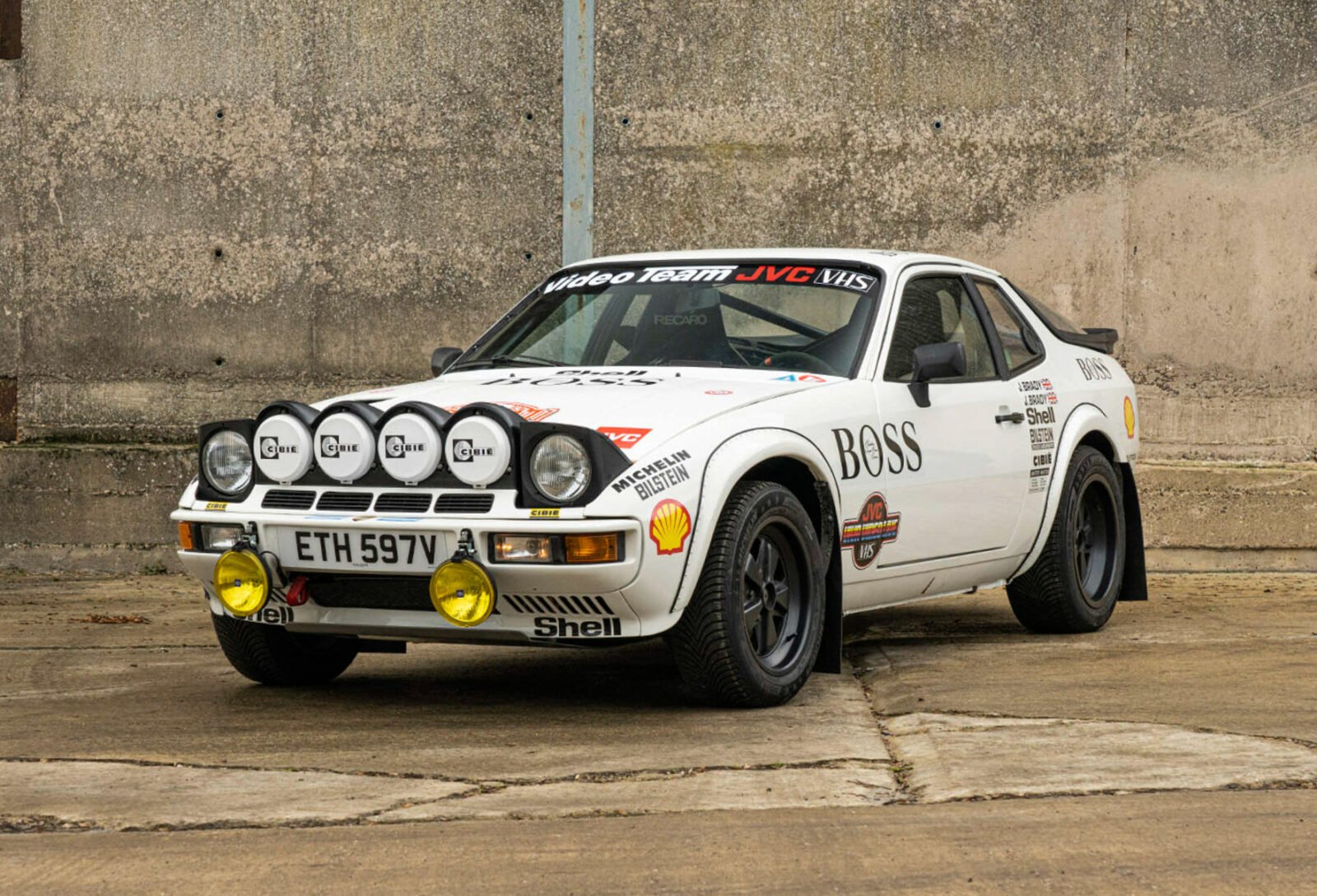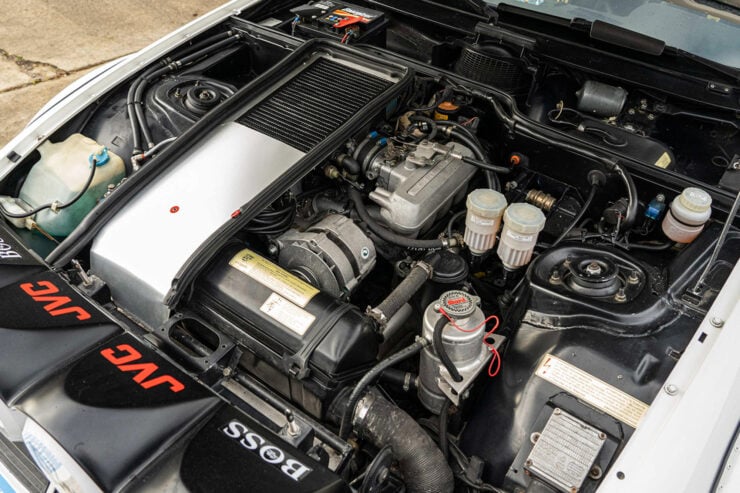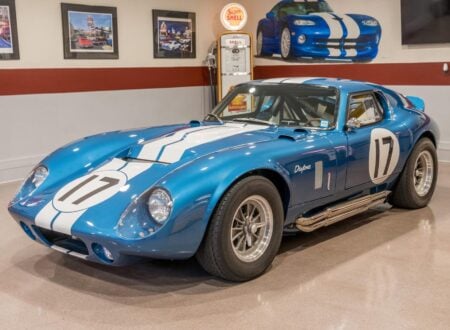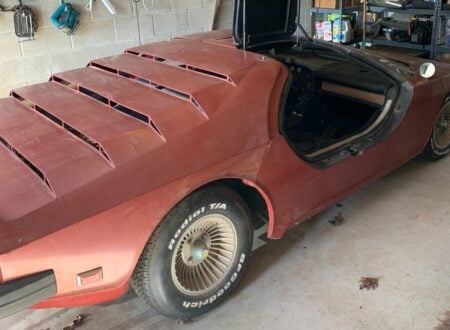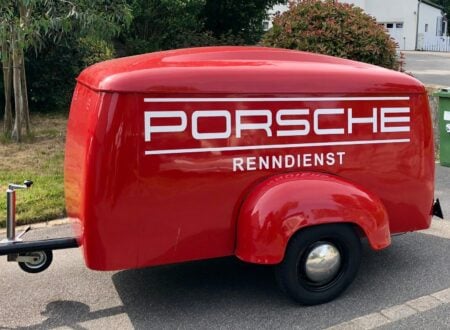This Porsche 924 Turbo has been meticulously rebuilt to FIA “Group 4” specification to take part in historic rally competition. It’s street-legal and it’s been raced twice in the Monte Carlo Historique Rally by Porsche legends Jürgen Barth and his original co-driver Roland Kussmaul.
Though often over-looked the Porsche 924 holds a special place in Porsche history, it was the first production car from the marque with a liquid-cooled front-mounted engine, and it benefitted from nearly perfect weight distribution.
Fast Facts – The Porsche 924 Turbo
- The Porsche 924 was originally developed by Porsche as a joint project with Volkswagen, who anticipated that it would become their new halo sports car model. VW cancelled the project before completion so Porsche took it over, using the 924 as the replacement for the 912E and 914 models.
- The 924 made its debut in 1975 and sales were brisk, the car had attractive modern styling, an affordable sticker price, and it was the first production Porsche with a liquid-cooled, front-mounted engine.
- In 1978 the Porsche 924 Turbo was introduced, it had been developed to solve the one gripe many owners had with the original car – that it simply didn’t have enough power. The 924 Turbo produced 170 bhp and 181 lb ft of torque, significantly more than the 95 to 110 bhp of the standard car.
- Various motorsport versions of the 924 were made including the Carrera GT and the Carrera GTR, they competed in both circuit racing and rally.
The Porsche That Was Almost A Volkswagen
The development story of the Porsche 924 is complex, it was originally commissioned by Volkswagen to be their new range-topping sports car and both Porsche and VW were to sell versions of it. The 1973 Oil Crisis made sports cars seem like a foolish extravagance, and VW cancelled the project opting to instead focus on their own Golf-based Scirocco model.
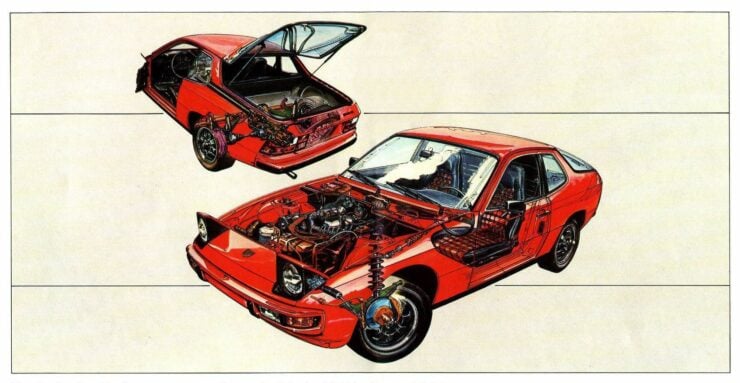

This could very well have been the end of the 924 however Porsche executives decided to keep the design, they bought out Volkswagen’s rights to the project and finished the development on their own.
The reason Porsche chose to carry on with the development is that they knew they needed a new entry level sports car, and they knew they needed to begin the process of moving at least some of their production cars away from air-cooling and rear-engined layouts.
To this same end the luxurious Porsche 928 was in development, with its liquid-cooled, front-mounted V8 engine and state-of-the-art styling. The 928 had been intended as the replacement of the Porsche 911, though of course this wasn’t to be.
Porsche engineers had developed the 924 with a rigid unibody shell, sleek aerodynamic styling with pop-up headlights, a 2+2 seating arrangement, a front-mounted engine and a transaxle located in the rear to give ideal weight distribution of 48/52.
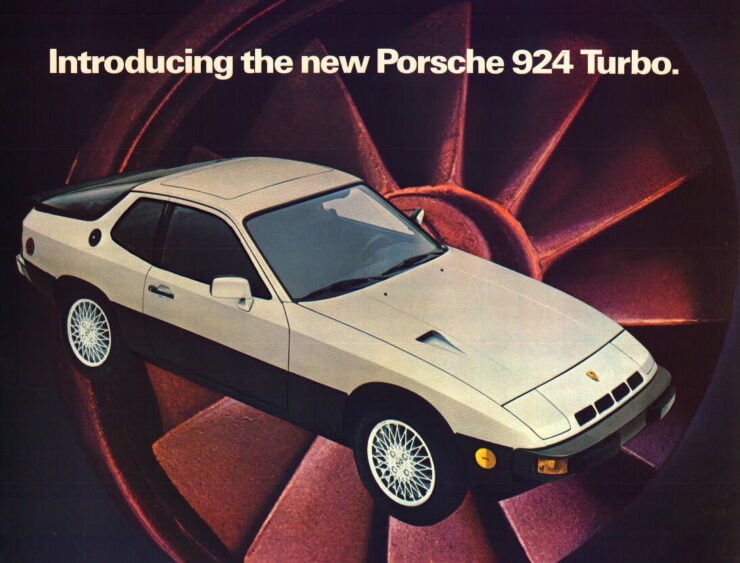

As the vehicle had started out as a Volkswagen project an engine from the pre-existing VW/Audi production units needed to be chosen – in the end they chose the VW EA831 2.0 liter inline-four engine which had previously been used in both Audi and VW vehicles.
The engine went through a series of modifications, the most significant of which was the addition of a new Porsche-designed cylinder head, and later versions would have their displacement gradually increased, with turbocharged variants making an appearance from 1978 onwards.
When Porsche introduced the 924 in 1975 as a 1976 model it proved instantly popular, it was affordable, it had cutting edge styling, a modern drivetrain, good handling, and who in the 1970s could resist the allure of pop-up headlights?
Perhaps the only major problem with the 924 was its performance, the 95 bhp inline-four was anemic by sports car standards. Porsche engineers kept working on the issue and power was increased to 110 bhp by 1977, but for many this was still woefully inadequate.
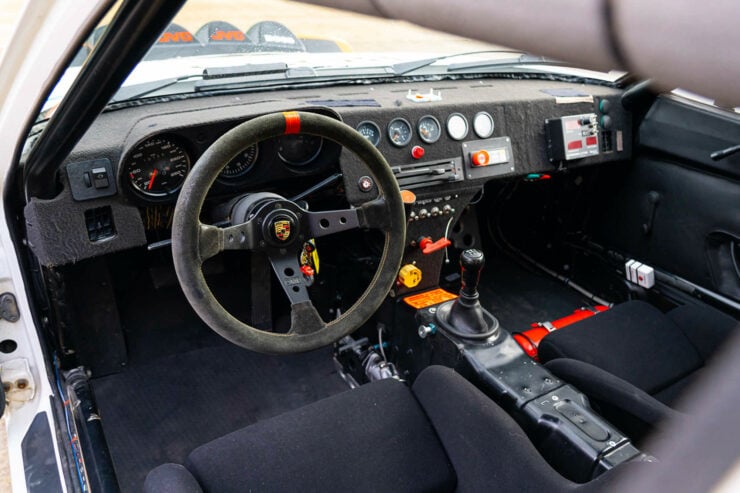

The Arrival Of The Porsche 924 Turbo
Porsche had significant experience in the world of turbocharging in both their 911 (930) model, and in their various racing programs. Company executives decided to capitalize on this forced-induction experience to solve the Achilles Heel of the 924 – the asthmatic hamster wheel levels of power produced by the original 2.0 four-cylinder.
Porsche engineers took the original VW EA831 2.0 engine and developed a new, stronger crankcase. They also developed stronger connecting rods, new specially shaped pistons, and a new aluminium-silicon alloy cylinder head.
A KKK K-26 turbocharger was fitted, it produced 10 psi of boost and engine power skyrocketed from 110 bhp to 170 bhp at 5,500 rpm with 181 lb ft of torque. With this new turbocharged engine the 924 Turbo was finally able to deliver on the promise of the excellent handling of the original car, and it would form the basis of the racing versions of the 924 including the Carrera GT and the Carrera GTR.
The Porsche 924 Turbo FIA “Group 4” Shown Here
The car you see here is a 1979 Porsche 924 Turbo that has been carefully built to FIA Group 4 specifications so it can take part in vintage motorsport events.
It’s already raced twice in the Monte Carlo Historique Rally, as noted in the introduction, and it was piloted by Jürgen Barth and his original co-driver Roland Kussmaul.
The car has an engine that was built by a former-Porsche works mechanic who worked on the original cars back in 1980.
It also has Bilstein shock absorbers front and rear, Bilstein road springs front and back, an alloy sump shield, a racing fuel tank in trunk, a stainless steel exhaust, Brembo brake linings, an uprated clutch, dual brake master cylinders, a hydraulic handbrake, a lightweight fiberglass hood, fiberglass period replica wheel arch extensions, Perspex rear side windows, a Perspex tailgate window, Fuchs alloy wheels, and a dog-leg “straight-cut” gearbox.
The car has an Historic Technical Passport valid in “Racing & Hill Climb & Rally” to 31st December 2028, an MSA Stage Rally Logbook, a FIVA Identity Card, and a UK V5C document ready for transfer or export.
If you’d like to read more about it or register to bid you can visit the listing here on Silverstone Auctions, it’s due to roll across the auction block on the 24th of February with a price guide of £65,000 – £75,000 or approximately $85,900 – $99,200 USD.
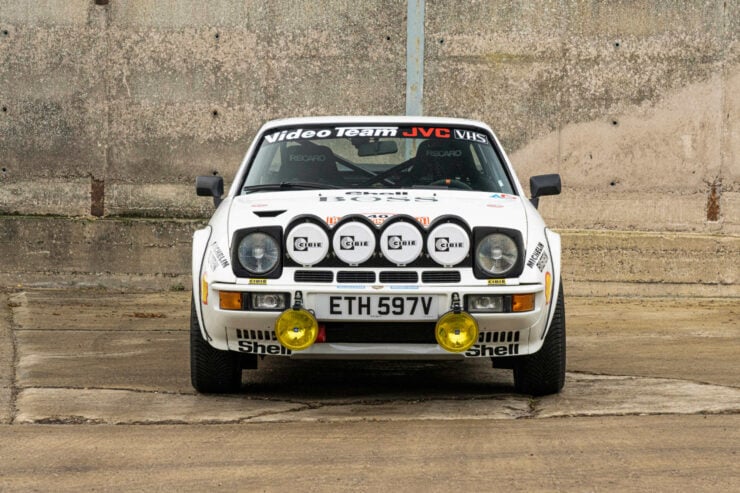
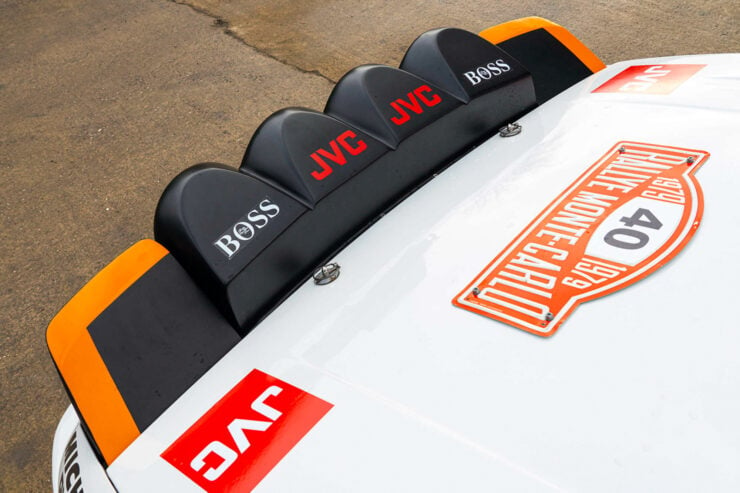
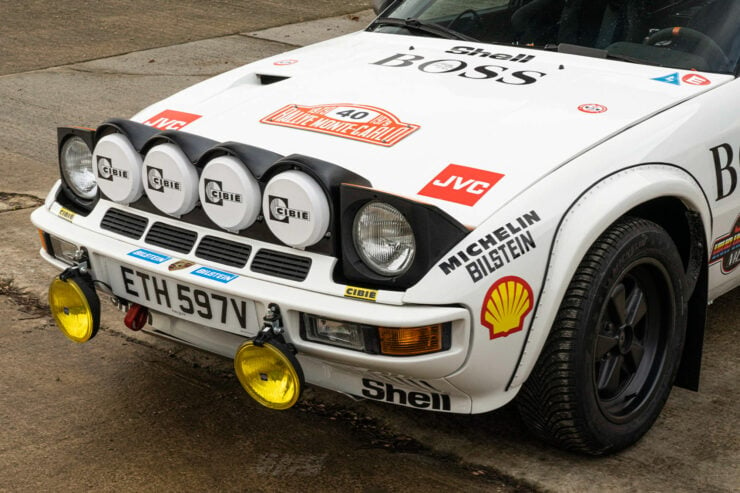
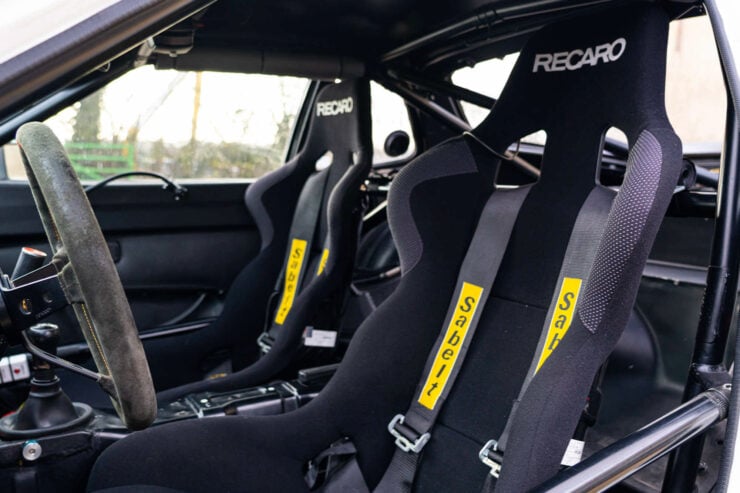
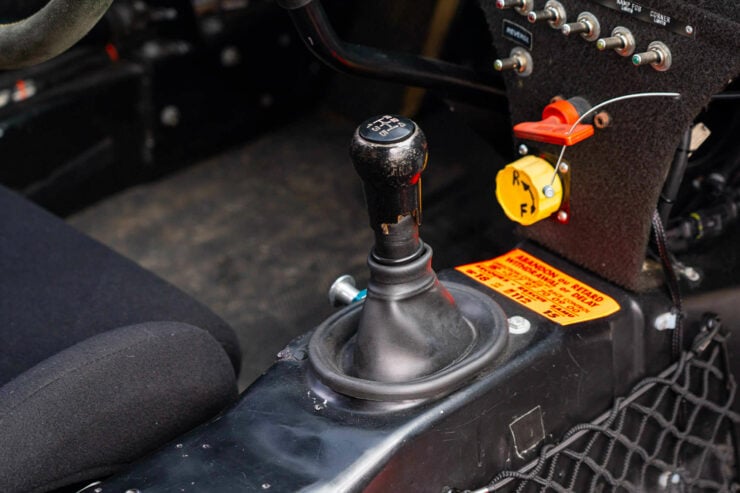

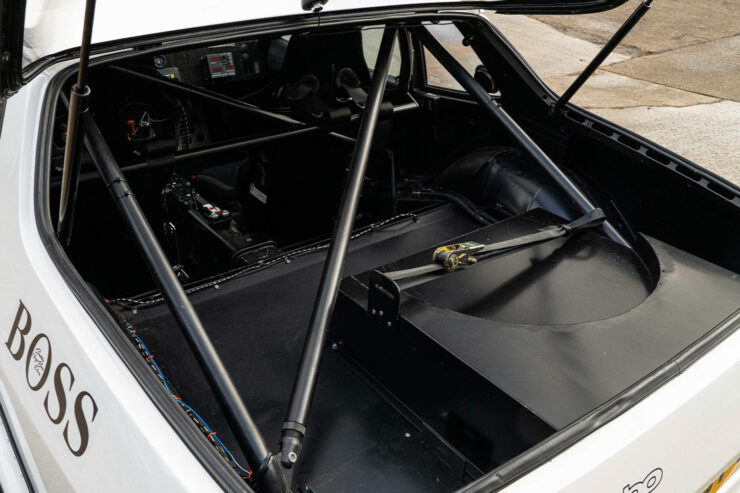
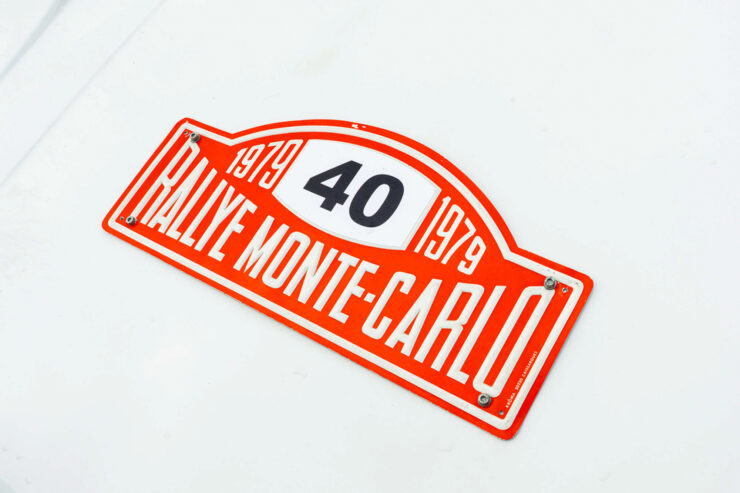
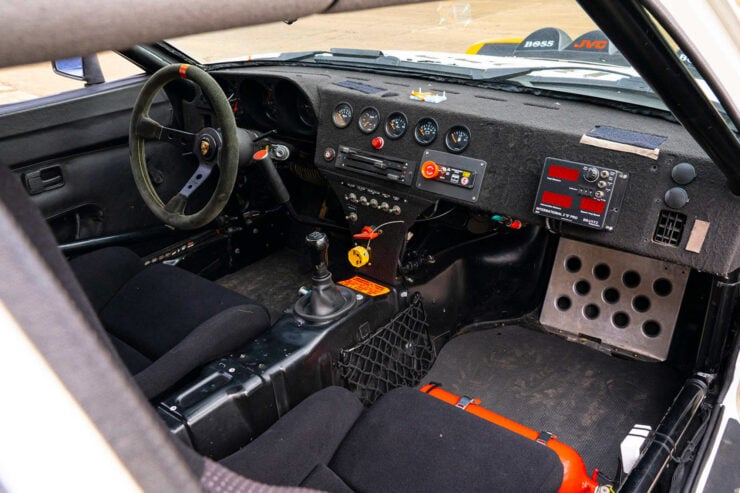
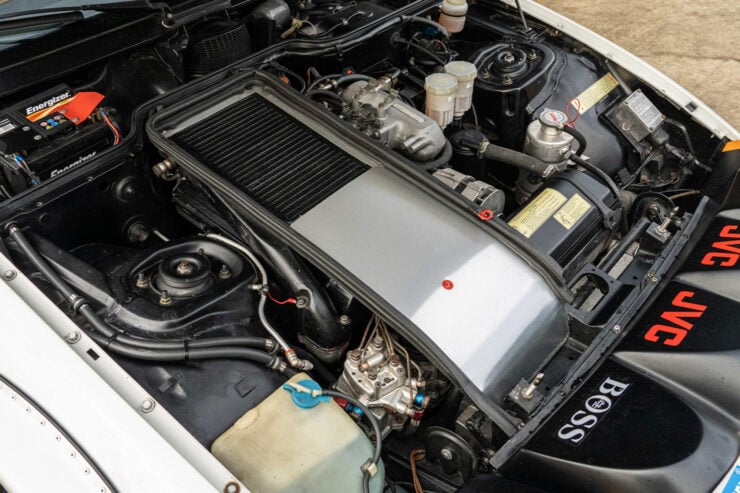
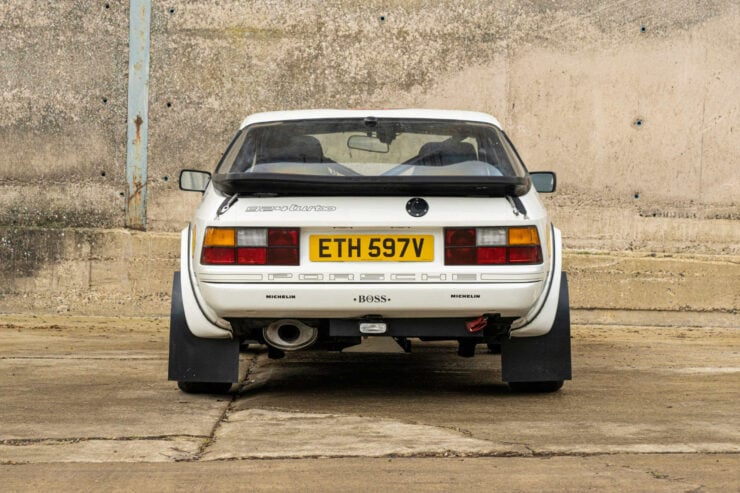
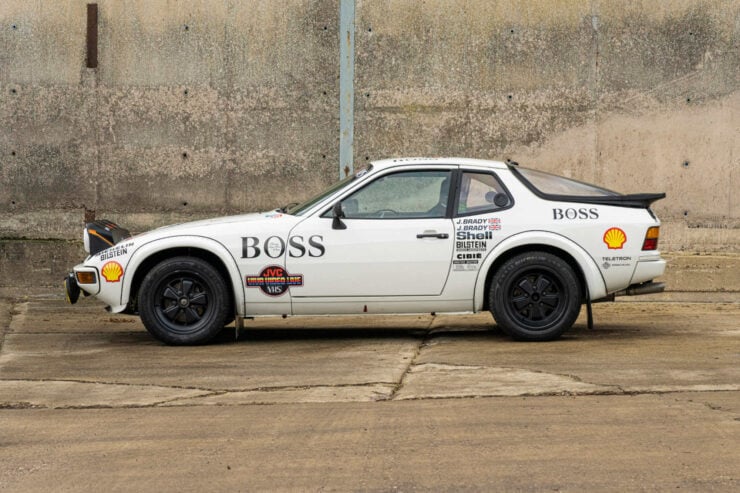
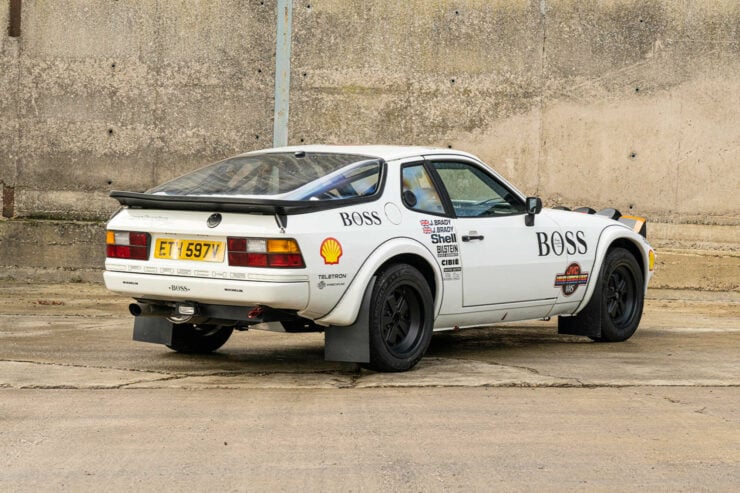
Images courtesy of Silverstone Auctions

